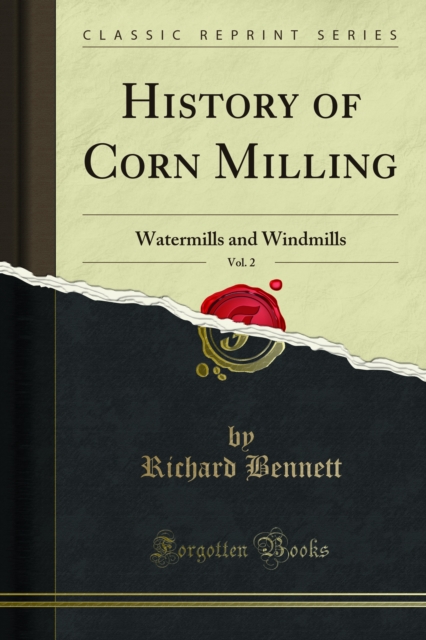
History of Corn Milling : Watermills and Windmills PDF
by Richard Bennett, John Elton
- Information
Description
Whilst the greatest effort has been made to ensure the quality of this text, due to the historical nature of this content, in some rare cases there may be minor issues with legibility.
In Volume I. the varied forms of archaic handstones are seen to culminate in the Roman quern, from which were developed revolving mills driven by slave or cattle labour.
In the present Volume the history is taken up from that point, and the development of the several forms of power corn mill traced from the classic ages to the advent of steam.<br><br>Such a record is not merely one of the manufacture of flour.
The art of milling has been most slow of growth: evolving itself from absolute crudity to modern perfection but gradually, and as it were very leisurely, as the centuries passed away.
But in tracing this apparently listless and lethargic evolution, we are brought face to face with affairs which not only largely account for it, but which in no slight degree are found to react upon the social life and industrial welfare of the people of all nations.
Peculiar laws and restrictions have for hundreds of years denied the corn miller freedom to trade (and even personal freedom), encouragement to progress, and permission to compete for quality and cheapness of work. And the same restrictions have filtered and doled the flour of the people through feudal legislative channels, and retarded for many ages the production of that cheap bread with which the welfare of the masses is so intimately concerned.
These matters seem as well worthy of study as the political and military troubles or glories of nations: and it is in this view that the authors have approached a subject which has hitherto been almost entirely overlooked.<br><br>Referring to the mills, all power corn mills are shown to be directly derived from the Greek watermill, the simple little machine with horizontal wheel, and devoid of gearing, which, under the designation Norse Mill, survives in some places to the present day.
The intervention of the Roman watermill, of larger capacity and greater power, with a vertical wheel driving stones through the intervention of cog gearin
Information
-
Download Now
- Format:PDF
- Publisher:Forgotten Books
- Publication Date:27/11/2019
- Category:
- ISBN:9780259640233
Information
-
Download Now
- Format:PDF
- Publisher:Forgotten Books
- Publication Date:27/11/2019
- Category:
- ISBN:9780259640233